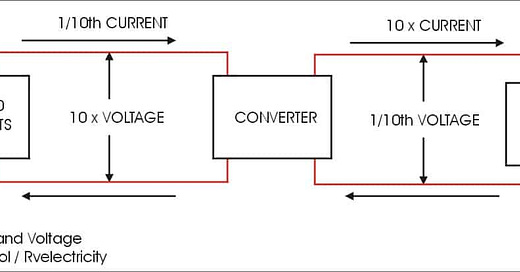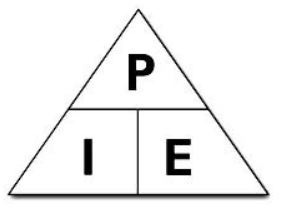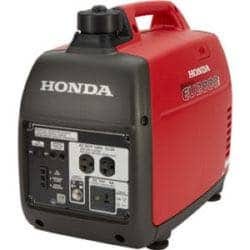Can I charge a battery at 80 amps from a 20-amp outlet?
It’s all about the relationship between volts and amps!
Dear Mike,
So, I have seen converters that can charge my RV batteries at 70 or 80 amps. Where would I be able to plug into a campground with 70-80 amps? Aren’t all the pedestal outlets only 20, 30 or 50 amps? –Martyn
Dear Martyn,
That’s a fabulous question. I’ll answer it today with a basic primer on current and voltage, but I’ll cover it in more depth later. So strap in…
Here’s the simple answer up front, but please keep reading to understand why
An 80-amp battery charger will draw only 1/10th of the battery charging current from the 120-volt outlet, which is 8 amperes – because 80 amps at 12 volts equals 8 amps at 120 volts. So any 20 amp pedestal outlet can easily charge a battery with an 80-amp charger.
Here are the reason why. There are four things in an electrical circuit that concern us. Voltage (electrical pressure), Current (electrical flow in Amperes), Power (energy in Watts), and Resistance (resistance to current flow in Ohms). We’re only going to consider Volts, Amps and Watts for this lesson.
Volts x Amps = Watts
The most basic formula in Ohm’s Law is that Volts x Amps = Watts. Again, ignore Ohms for this lesson as that will be covered in more detail later.
You’ll often see this equation written as E x I = P because in engineering language E is Electromotive Force in Volts, I is current Intensity in Amperes, and P is Power in Watts. I’ve included a basic Ohm’s Law chart for future reference, but for today let’s call it V X A = W (Volts x Amps = Watts) just to keep things simple.
And because you can rearrange any basic equation, it’s also true that Watts / Amps = Volts (Watts divided by Amps = Volts) as well as Watts / Volts = Amps. Still with me? That’s as complicated as it gets for now so let’s keep going.
Now let’s imagine that we want to charge a battery with 80 amperes of current. And we know that batteries are basically 12 volts DC. If we multiply 80 amps x 12 volts we get 960 watts of charging power required. And that’s why you have such large wiring on your battery. It takes a lot of copper to supply 80 amperes of current (or even a lot more at times).
But back to your question about where to plug in an 80-amp battery charger at a campground pedestal that only has 20-, 30- and 50-amp outlets. To answer that question we go back to the equation of Volts x Amps = Watts.
The 10:1 and 1:10 Ratios
Most of us know that instead of the shore power outlet on the pedestal supplying 12 volts of DC, it actually supplies 120 volts AC. So on the shore power side of your charger we need to provide it with the same amount of power (960 watts) but it’s at 120 volts AC instead of 12 volts DC. Here’s the equation now: 960 Watts / 120 Volts = 8 amperes. That’s right, since there is a 10:1 ratio of voltage between the two sides of the converter/charger (120 volts AC being converted to 12 volts DC), there’s a 1:10 ratio of amperage (8 amps of 120 volts AC being converted to 80 amps of 12 volts DC).
What that tells us is that an 80-amp battery charger will draw only 1/10th of the battery current on the 120-volt shore power side, which is 8 amperes (80 amps / 10 = 8 amps).
This also works for AC inverters which are stepping up 12 volts DC to 120 volts AC to power appliances in your RV. For example, if you have a residential refrigerator that draws 5 amps of current at 120 volts AC, then the 12-volt battery has to supply 10 times that 120 volt current which is 50 amps at 12 volts. That because 5 amps x 120 volts AC = 600 watts, as well as 50 amps x 12 volts DC = 600 watts. The input power and output power remain the same (minus a few percent of actual losses which we’re ignoring here for simplicity).
Why a small generator can charge a large battery bank
This is also why the smallest inverter generator you might have (2,000 watts, which can provide around 16 amps of current at 120 volts) can easily charge your RV’s batteries with 80 amps of current at 12 volts. Because 80 / 10 = 8, the battery charger will only draw around 8 amperes (or so) of current at 120 volts from the generator, so all is well.
Does AC or DC make a difference?
Note that there’s no real difference between AC (Alternating Current) and DC (Direct Current) as far as these equations are concerned; I’ve only added it for clarification. In these examples we’re calculating the amount of amperage needed to transfer a certain amount of power using a specified voltage. As long as you remember that the 12-volt battery side of the converter or inverter has 10 times as much amperage as the 120-volt shore power side, you’ll be close enough for basic calculations.
Okay, so this is a little more math than you may be used to, but it’s absolutely essential to understanding battery amperage vs. shore power amperage. Now that you’ve graduated from this basic course, I’ll move on to including resistance in the next installment. Don’t worry, it will be mostly painless.
Let’s play safe out there…. Mike











The 10:1 relationship really bites us when using inverters to power high power devices like coffee makers, heaters, and AC because the current on the 12V side gets very high requiring short fat wiring (I.e., large gauge). For example, a 1.2kW heater will draw 1,200W/12V=100A which is a lot of current!